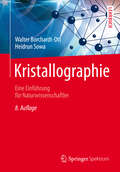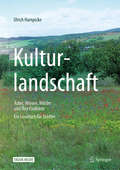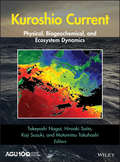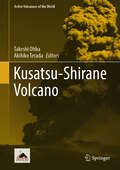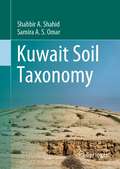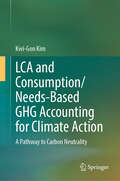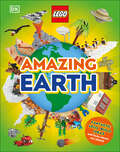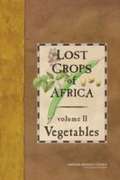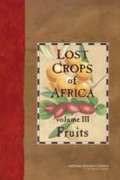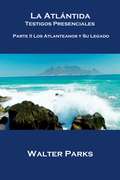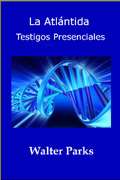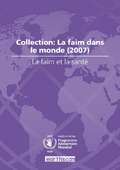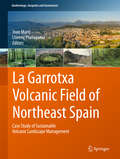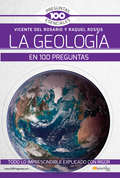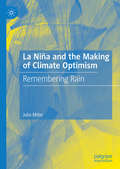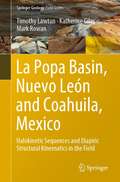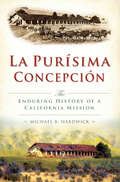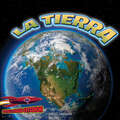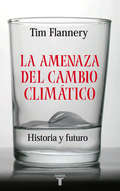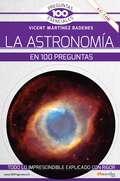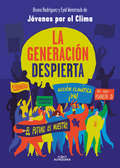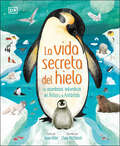- Table View
- List View
Kristallographie: Eine Einführung für Naturwissenschaftler
by Heidrun Sowa Walter Borchardt-OttDieses eingeführte Lehrbuch basiert auf Vorlesungen an der Westfälischen Wilhelms- Universität Münster, an der TU Berlin und an der Georg-August-Universität Göttingen. Der Schwerpunkt des Buches liegt bei der geometrischen Kristallographie. Vom Raumgitter ausgehend werden Symmetrieoperationen, Bravais-Gitter, Raum- und Punktgruppen abgehandelt. Die Betrachtung der Raumgruppen ist in dieser 8. Auflage um eine kurze Einführung in die Beziehungen zwischen Symmetriegruppen und deren Anwendung erweitert worden. Es folgen Kapitel über Kristallchemie und röntgenographische Untersuchungen. Die einzelnen Kapitel schließen mit zahlreichen Übungsaufgaben, deren Lösungen angegeben sind.
Krushi Bhugol First Semester FYBA, B.COM, B.SC New NEP Syllabus - SPPU: कृषी भूगोल प्रथम सत्र एफ.वाय.बी.ए., बी.कॉम, बी.एस्सी नवीन एन.इ.पी. अभ्यासक्रम - सावित्रीबाई फुले पुणे यूनिवर्सिटी
by Prof. Ashok Maruti Thorat Prof. Dr. Sanjay Dagu Pagar Prof. Nikhil Uttam Agleसावित्रीबाई फुले पुणे विद्यापीठाच्या (SPPU) नवीन राष्ट्रीय शैक्षणिक धोरण (NEP) 2020 अंतर्गत प्रथम वर्ष बी.ए. (FYBA) अभ्यासक्रमात कृषी भूगोल हा अभ्यासक्रम समाविष्ट करण्यात आला आहे. कृषी भूगोल हा आर्थिक भूगोलाची एक महत्त्वाची उपशाखा असून, शेतीचे प्रादेशिक वितरण, शेती प्रकार, उत्पादन पद्धती, तसेच तांत्रिक, सामाजिक व पर्यावरणीय घटकांचा सखोल अभ्यास करतो. या विषयात शेती विकासाचे टप्पे, शेतीत होणारे बदल, तसेच शेती पद्धतींचे स्वरूप स्पष्ट केले जाते. शेतीच्या विविध प्रकारांचे विश्लेषण करताना त्यावर प्रभाव टाकणाऱ्या भौतिक घटकांबरोबरच आर्थिक, सामाजिक, सांस्कृतिक आणि तांत्रिक घटकांचा सखोल अभ्यास केला जातो. शेतीविकासासाठी हरित, निळी आणि धवल क्रांतींची माहिती दिली जाते, तसेच जलसिंचनाच्या पद्धती, तंत्रज्ञानाचा वापर, आणि शाश्वत शेतीच्या दिशेने होणारे बदल समजावले जातात. कृषी भूगोलाचा अभ्यास शेतकऱ्यांना उत्पादन वाढवण्यासाठी, संशोधकांना नवनवीन पद्धती विकसित करण्यासाठी, तसेच उद्योगांना कृषीपूरक व्यवसायांचे नियोजन करण्यासाठी उपयोगी पडतो. याशिवाय, हवामान बदल, मृदा संरक्षण, जल व्यवस्थापन, आणि शेतीपूरक व्यवसायांचा अभ्यासही या विषयाचा अविभाज्य भाग आहे. शेती व कृषीमालाच्या बाजारपेठांचे नियोजन, तसेच सामाजिक-आर्थिक योजनांचा आराखडा तयार करताना कृषी भूगोल महत्त्वाची भूमिका बजावतो.
Krushi Vyavsay Second Semester FYBA New NEP Syllabus - SPPU: कृषी व्यवसाय दुसरे सत्र एफ.वाय.बी.ए. नवीन एन.इ.पी. अभ्यासक्रम - सावित्रीबाई फुले पुणे यूनिवर्सिटी
by Dr Sunil Ugale Dr Amol Gaikwad Dr Deepak Kareकृषी व्यवसाय हा भारतातील आर्थिक आणि सामाजिकदृष्ट्या अत्यंत महत्त्वाचा घटक आहे. यामध्ये कृषी विपणन, शेतकरी उत्पादक संघटना (FPOs), प्रक्रिया उद्योग, आणि शाश्वत शेतीविषयक धोरणांचा समावेश होतो. भारतातील कृषी विपणनाचे स्वरूप पारंपरिक आणि आधुनिक प्रणालींच्या मिश्रणाने ओळखले जाते. पारंपरिक मंडई, बाजार समित्या, आणि एपीएमसी यंत्रणेसोबतच ई-नामसारख्या डिजिटल प्लॅटफॉर्ममुळे कृषी विपणनात क्रांतिकारक बदल झाले आहेत. कृषी व्यवसायामध्ये प्रक्रिया उद्योगांचा विकास, उत्पादकांना थेट ग्राहकांपर्यंत पोहोचविणारे डिजिटल प्लॅटफॉर्म, आणि शेतकऱ्यांसाठी वित्तीय सहाय्य महत्त्वपूर्ण ठरले आहे. यामुळे शेतकऱ्यांचे उत्पन्न वाढण्यासोबतच भारतीय कृषी उत्पादनांना जागतिक स्तरावर ओळख मिळत आहे. कृषी व्यवसायाच्या प्रभावी धोरणांमुळे ग्रामीण भागातील अर्थव्यवस्था सशक्त होऊन शेतकऱ्यांचे जीवनमान उंचावले आहे. शाश्वत शेती, पर्यावरणीय तंत्रज्ञान, आणि जागतिक स्पर्धेत टिकण्यासाठी नवोन्मेषी उपाययोजना या क्षेत्राच्या यशस्वी प्रगतीसाठी अत्यावश्यक ठरतात.
Kulturlandschaft - Äcker, Wiesen, Wälder und ihre Produkte: Ein Lesebuch für Städter
by Ulrich HampickeDieses Buch gibt einen detaillierten Überblick über die Kulturlandschaften Mitteleuropas einschließlich des Waldes und wie diese durch den Menschen und seine Wirtschaft entstanden und geprägt wurden. Der Leser erfährt, wie die moderne Produktion in der Landwirtschaft aussieht und welche Probleme durch diese Produktion und unseren Konsum entstehen. In diesem Zusammenhang wird auf die Agrarpolitik und den Außenhandel eingegangen. Neben ökonomisch-politischen Themen erklärt der Autor auch die biologischen Zusammenhänge und Auswirkungen unserer Landwirtschaft. So geht er neben anderen Themen besonders auf dem Verlust der Biodiversität und die Desorganisation der Stoffkreisläufe in der Agrarlandschaft ein. Im zweiten Teil des Buches werden Lösungen zu den Problemen und Perspektiven aufgezeigt. Dabei werden zuerst die Ansätze auf politischer Ebene beleuchtet und danach auf Initiativen auf anderen Ebenen eingegangen. Dieses Buch wendet sich an alle, die sich über die moderne Landwirtschaft informieren und die Hintergründe aktueller Debatten verstehen möchten.
Kuroshio Current: Physical, Biogeochemical, and Ecosystem Dynamics (Geophysical Monograph Series #242)
by Koji Suzuki Takeyoshi Nagai Hiroaki Saito Motomitsu TakahashiAn interdisciplinary study of the Kuroshio nutrient stream The surface water of the Kuroshio, a western boundary current in the North Pacific Ocean, is nutrient-depleted and has relatively low primary productivity, yet abundant fish populations are supported in the region. This is called the “Kuroshio Paradox”. Kuroshio Current: Physical, Biogeochemical and Ecosystem Dynamics presents research from a multidisciplinary team that conducted observational and modeling studies to investigate this contradiction. This timely and important contribution to the ocean sciences literature provides a comprehensive analysis of the Kuroshio. Volume highlights include: New insights into the role of the Kuroshio as a nutrient stream The first interdisciplinary examination of the Kuroshio Paradox Reflections on the influence of the Kuroshio on Japanese culture Research results on both the lower and higher trophic levels in the Kuroshio ecosystem Comparisons of nutrient dynamics in the Kuroshio and Gulf Stream Predictions of ecosystem responses to future climate variability
Kusatsu-Shirane Volcano (Active Volcanoes of the World)
by Takeshi Ohba Akihiko TeradaThis volume presents a comprehensive overview of Mt. Kusatsu-Shirane, one of the most active volcanoes in Japan in terms of persistent release of volatile as volcanic gas and hot springs. The unexpected eruption of Kusatsu-Shirane volcano on January 23, 2018, caused human damages. It shed light on the difficulty of the prediction of phreatic eruptions, whereas motivated studies on schemes for volcano monitoring, research and disaster mitigation of the dormant volcanoes. This book includes the past and on-going research on the Kusatsu-Shirane volcano with varieties of disciplines such as seismology, geodesy, geomagnetism, geochemistry, petrology, and social science research on reporting of the eruption in 2018.
Kuwait Soil Taxonomy
by Shabbir A. Shahid Samira A. OmarThis book provides guidelines to key soil taxa in the deserts of Kuwait and guidance to associated procedures for laboratory analyses of soils, leading to land use planning on informed decisions. Soils are essential to provide food, feed, and fiber in addition to multiple ecosystem services that sustain life on earth. To achieve the above services sustainably, it is essential to use soils rationally based on their potential for specific uses. This requires establishing national soil classification systems to assess soils locally and to provide guidance to other countries where similar soils may be occurring. Once soil classification is established, it becomes easier to adopt technologies established on similar soils and environmental conditions without conducting long-term and expensive experimental trial. The taxa are established based on soil’s morphological, physical, chemical, and mineralogical properties and climatic factors. It offers opportunities to maintain future soil surveys and their correlation to the soils of Kuwait. The book is useful in other arid region countries where similar soil and environmental conditions are existing, such as Bahrain, Oman, Qatar, and Saudi Arabia. The book also has international relevance, as it was prepared by extracting definitions from USDA-NRCS keys to soil taxonomy, and sections related to soils of Kuwait are added in the book. The book is a unique and excellent addition to the international soil literature.
LCA and Consumption/Needs-Based GHG Accounting for Climate Action: A Pathway to Carbon Neutrality
by Kwi-Gon KimThis book reveals causes of the GHG emission accounting practice failure over the last several decades, describes evolution of new tenets of the accounting and remaining tasks, and suggests a new comprehensive integrated accounting in the form of protocol. The latest Intergovernmental Panel on Climate Change (IPCC) assessment report calls for net zero CO2 emissions by 2050 to limit warming to 1.5 degree C. As a result, many countries, cities, and industries are putting forward their greenhouse gas (GHG) emission reduction actions and commitments. But can the countries, cities, and industries meet these ambitious decarbonization goals without a reliable GHG inventory? This book tries to answer this question. It has been argued that there is a need to include LCA and consumption/needs-based GHG emissions as a complimentary indicator to the current approach of production-based GHG accounting emissions. As a shifting of the focus of accounting system after the Paris Agreement, consumption/needs-based approach is newly focused on a more broader accounting approach for NDCs and LDCs with a vision of all of society approach. Traditional national inventory approach to GHG emission accounting has been severely criticized as being too production process-oriented, sector-based approach, less transparent, a lack of public participation, no considerations for human needs and human factors.
LEGO Amazing Earth: Fantastic Building Ideas and Facts About Our Planet
by Jennifer SwansonA whistle-stop tour of the most amazing features and places on planet Earth, illustrated with LEGO models, including tips for budding LEGO buildersExplore our amazing planet – and learn to build the most incredible things on Earth!There is so much to see on planet Earth. From the rainforest canopy to the deepest depths of the Pacific Ocean, discover plants, animals, and the geological features that make up our planet. Travel the continents and look inside volcanoes, mountains, geysers, and much more. Visit the Amazon, check out the world&’s tallest waterfall, and explore the most incredible places on the planet without leaving home. With more than 100 LEGO models to inspire you, what on Earth will you build? ©2023 The LEGO Group.
LOST CROPS of AFRICA: volume II Vegetables
by National Research Council of the National AcademiesThis report is the second in a series of three evaluating underexploited African plant resources that could help broaden and secure Africa's food supply. The volume describes the characteristics of 18 little-known indigenous African vegetables (including tubers and legumes) that have potential as food- and cash-crops but are typically overlooked by scientists and policymakers and in the world at large. The book assesses the potential of each vegetable to help overcome malnutrition, boost food security, foster rural development, and create sustainable landcare in Africa. Each species is described in a separate chapter, based on information gathered from and verified by a pool of experts throughout the world. Volume I describes African grains and Volume III African fruits.
LOST CROPS of AFRICA: volume III
by National Research Council of the National AcademiesThis book is the third in a series evaluating underexploited African plant resources that could help broaden and secure Africa's food supply. The volume describes 24 little-known indigenous African cultivated and wild fruits that have potential as food- and cash-crops but are typically overlooked by scientists, policymakers, and the world at large. The book assesses the potential of each fruit to help overcome malnutrition, boost food security, foster rural development, and create sustainable landcare in Africa. Each fruit is also described in a separate chapter, based on information provided and assessed by experts throughout the world. Volume I describes African grains and Volume II African vegetables.
La Atlántida Testigos Presenciales Parte II Los Atlanteanos y Su Legado
by Walter Parks Cinthia Noemi MascarellMuchos han creído que la Atlántida es una historia de ficción creada por Platón. Bien, pues Platón no fue el primero en escribir sobre ella. Hemos encontrado un documento mucho más antiguo. Fue escrito en el año 9619 AC, alrededor de 9250 años antes de los escritos de Platón. Además, hemos reunido evidencias científicas y arqueológicas suficientes para constatar que la Atlántida fue real. Y hemos hallado sus restos. Organizamos la evidencia como respuestas a 3 preguntas básicas: ¿cómo fue creada la Atlántida?, ¿dejó evidencia de su existencia o un legado?, ¿Cómo fue destruida? Este libro electrónico es la parte II.
La Atlántida: Testigos Presenciales
by Walter ParksMuchos han creído que la Atlántida era una ficción creada por PLatón. Pues bien, PLatón no fue el primero que escribió sobre ella. Hemos encontrado un documento mucho más antiguo. Fue escrito en el 9619 a.C., unos 9250 años antes de los escritos de Platón. Este documento está considerado el más antiguo que ha sobrevivido, casi intacto, a lo largo de los años. Otros hayazgos arquológicos y evidencia científica ofrecen pruebas convincentes de que la Atlántida realmente existió; la Atlántida fue real. Hemos estructurado la evidencia encontrada en forma de respuestas a tres preguntas básicas. Primeramente, si existió, ¿cómo fue creada? Si existió, ¿tuvo influencia sobre algo? ¿Dejó evidencia de su existencia? ¿Dejó un legado? ¿Dónde se encuentran sus restos? Esta es la Parte I, la Creación de la Atlántida. Lee y te convencerás de que la Atlántida realmente existió.
La Faim et la Sante: Collection: La Faim dans le Monde (2007)
by World Food ProgrammeFirst published in 2008, La Faim et la Sant is a valuable contribution to the field of Environment and Sustainability.
La Garrotxa Volcanic Field of Northeast Spain
by Joan Martí Llorenç PlanagumàThis informative book takes readers on an enjoyable journey through the La Garrotxa volcanoes. In addition to a general description of the main geological and volcano logical values of the region, it also provides a detailed account of the history of the region, its biological diversity, and its cultural heritage including architecture, folklore and gastronomy. La Garrotxa Volcanic Zone was declared a Natural Park in 1982 to protect the numerous sites of special interest that are found in this region. The Natural Park has been pioneering in many initiatives aimed at preserving the landscape and natural values and promoting awareness of the area within the community. An important part of this book is dedicated to the insights into the educational programs and outreach developed to disseminate the main values of this region. It shows how sustainable tourism has been implemented and the management plan that has been designed to preserve such important natural and cultural values. Including local experts’ views on the topics covered, this book will appeal to a general audience interested not only in visiting the area but also in gaining insights into an example of geoheritage and geoconservation that has successfully integrated of education, tourism, planning and environmental management.
La Geología en 100 preguntas (100 Preguntas esenciales)
by Vicente Del Rosario RabadánLa respuesta de las geociencias a las principales y más curiosas cuestiones de nuestro planeta. Descubra con agudeza e inteligencia los aspectos más apasionantes de la estratigrafía, la mineralogía y la paleontología. La atmósfera y la hidrosfera, el clima presente, pasado y futuro. Las rocas, los recursos geológicos, la geofísica y la tectónica de placas. ¿Cuántos años tiene la Tierra? ¿Cuáles son los poderes de las piedras? ¿Hubo años con miles de días? ¿Existieron dinosaurios en la prehistoria? ¿Cuántos meteoritos han chocado con la Tierra? ¿Cuál es el secreto de la Gran Esfinge? ¿Qué hay de cierto en las películas de catástrofes? ¿Es posible viajar al centro de la Tierra? Si Pangea existió, ¿qué hubo antes? Toledo y el Everest, ¿qué tienen en común? ¿Puede desaparecer la vida? ¿Somos polvo de estrellas?
La Niña and the Making of Climate Optimism: Remembering Rain
by Julia MillerThis book examines the deep connection Australians have with their climate to understand contemporary views on human-induced climate change. It is the first study of the Australian relationship with La Niña and it explains how fundamental this relationship is to the climate change debate both locally and globally. While unease with the Australian environment was a hallmark of early settler relations with a new continent, this book argues that the climate itself quickly became a source of hope and linked to progress. Once observed, weather patterns coalesced into recognizable cycles of wet and dry years and Australians adopted a belief in the certainty of good seasons. It was this optimistic response to climate linked to La Niña that laid the groundwork for this relationship with the Australian environment. This book will appeal to scholars and students of the environmental humanities, history and science as well as anyone concerned about climate change.
La Popa Basin, Nuevo León and Coahuila, Mexico: Halokinetic Sequences and Diapiric Structural Kinematics in the Field (Springer Geology)
by Timothy Lawton Katherine Giles Mark RowanThis book describes the two excursions accessed from the Monterrey International Airport on the north side of Monterrey, Nuevo León, Mexico. Excellent exposures of salt diapirs and flanking strata in La Popa basin, northeastern Mexico, contain world-class examples of salt–sediment interaction that provided the basis for the concept of halokinetic sequences. The basin also contains one of the first secondary salt welds described in outcrop. Two one-day excursions described here provide an easily accessible overview of salt–sediment relations within a short distance of Monterrey, Nuevo León, Mexico. Excursion 1 constitutes an introduction to basin stratigraphy, an introduction to halokinetic sequences at El Papalote diapir, and a visit to a salt-cored detachment fold near Hidalgo, Nuevo León. Excursion 2 is a visit to La Popa salt weld, where stops at several parts of the weld permit comparison of different structural styles developed along the weld. Each excursion begins and ends at the Marriott Courtyard Aeropuerto Hotel, near the Monterrey airport.
La Purisíma Concepción: The Enduring History of a California Mission (Brief History)
by Michael R. HardwickIn two centuries, La Purísima Concepción went from a fledgling frontier mission to a renowned California State Historic Park. Once home to many Spanish soldiers, settlers and hundreds of Chumash Indians, La Purísima held the seat of the California Mission government under Father Mariano Payeras. It withstood catastrophic events, including widespread disease in early years and a great Southern California earthquake in 1812. Emerging from ruins for the last time in 1934, after restoration by the Civilian Conservation Corps, structures appear today as they did in the early nineteenth century. The uniquely restored California Mission complex operates as a state park in a pastoral setting. Author and archivist Michael R. Hardwick chronicles the story of La Purísima and the resilient people and culture that made a lasting influence.
La Tierra: Earth: The Living Planet (Inside Outer Space)
by Julie LundgrenHome, Sweet Home! This title is about Earth, the planet we live on! The layers of the Earth, how it relates to the other planets in our solar system, and how it is the only known planet to sustain life, as far as we know, are all discussed in this science title. Learn about how the Earth rotates on its axis, giving us day and night, and how it orbits and is warmed by that giant star we call the Sun. This book will allow students to make observations to determine the effect of sunlight on Earth’s surface.
La amenaza del cambio climático
by Tim Flannery¿Qué significa el cambio climático? ¿Cómo afectará el calentamiento global a nuestras vidas? ¿Es la causa de las tormentas extremas y de las sequías cada vez más frecuentes? ¿Son inevitables estos sucesos? Con este libro, Tim Flannery responde a cuestiones tan urgentes como éstas y otras muchas. Para ayudarnos a comprender el dilema al que nos enfrentamos, nos cuenta con detalle la fascinante historia del clima y su posible futuro, pues si seguimos quemando combustibles fósiles, aumentarán los niveles de gases de efecto invernadero en la atmósfera y esto provocará un calentamiento del planeta aún mayor. A pesar de que cada país se ve influido de manera diferente por estos efectos no deseados, todos tenemos algo en común: la amenaza del cambio climático. La nueva meteorología que estamos generando pone en peligro el futuro de nuestra civilización. Tenemos que ser conscientes de que el estado de la atmósfera y del subsuelo, del agua y de la tierra depende de nosotros. Pero este reconocido científico va más allá de relatar la historia del clima y no pierde el optimismo. Con gran entusiasmo, Flannery muestra cómo podemos colaborar en la lucha contra estos problemas y nos transmite su confianza en una futura solución si todos nos implicamos. Nos sorprenderá lo mucho que aún podemos hacer. La amenaza del cambio climático nos puede cambiar la vida. Reseñas:«Por fin una explicación clara sobre una de las cuestiones más importantes y polémicas de la actualidad.»Jared Diamond «Éste es el libro que el mundo ha estado esperando -y necesitando- durante décadas. Por fin un libro que presenta, para el público general, la prueba irrefutable de que el cambio climático ya se está produciendo, y la necesidad de ser muy serios con este tema... rápidamente.»Peter Singer «Todo aquel que lea La amenaza del cambio climático podrá apreciar la fragilidad de nuestro clima y comprender que es ésta la generación que debe actuar para protegerla.»Tony Blair
La astronomía en 100 preguntas (100 preguntas Esenciales)
by Vicent Martínez BadenésTodas las cuestiones esenciales de la ciencia del universo: Instrumentación astronómica, misiones espaciales, el sistema solar, física estelar, exoplanetas, física galáctica, extragaláctica y cosmología. Desde el origen de la astronomía hasta los experimentos más avanzados y la investigación científica de vanguardia.
La generación despierta
by Bruno Rodríguez Eyal WeintraubBruno Rodríguez y Eyal Weintraub, cofundadores de la agrupación ambiental Jóvenes por el clima, parte del movimiento Fridays for Future creado por Greta Thunberg, comparten su visión sobre la crisis climática y analizan el rol vital de la juventud en la construcción de un nuevo paradigma que permita imaginar un futuro distinto en el planeta. En el año 2019, los jóvenes Bruno Rodriguez y Eyal Weintraub, recién salidos del colegio secundario, observaron lo que la huelga de Greta Thunberg en Suecia estaba generando a nivel global y entendieron que había que poner manos a la obra. La agrupación que fundaron, Jóvenes por el clima, es hoy una referencia ineludible en el movimiento ambiental argentino. Son audaces, son irreverentes y no se callan nada. Este libro es un análisis fulminante de los factores que condujeron a la situación crítica que hoy amenaza la vida en el planeta. Es también una reflexión política profunda, que pone el foco en las desigualdades y denuncia la inacción de los gobiernos. Y es sobre todo una reivindicación de la utopía y del espíritu transformador que puede guiarnos en la creación de un futuro distinto.
La geografía en 100 preguntas (100 preguntas Esenciales)
by Rocío Pérez GañánLas claves imprescindibles para entender la compleja relación de ser humano con el medio natural, desde las antiguas civilizaciones hasta las sociedades contemporáneas del mundo globalizado. Desde los conceptos básicos, escuelas teóricas, ramas fundamentales y su evolución histórica hasta su interrelación con otras ciencias, la geografía como tecnociencia y sus aplicaciones más vanguardistas. ¿Aire acondicionado o calefacción ante el cambio climático?, ¿Cuál es la responsabilidad de la geografía general respecto a las dinámicas humano-naturaleza?, ¿Vivimos de forma local, global o globalocal?, ¿El conocimiento geográfico durante la Edad Media se sumergió en un oscurantismo científico?
La vida secreta del hielo (The Magic and Mystery of the Natural World)
by Jason BittelAdéntrate en 'La vida secreta del hielo' y embarca en un viaje increíble por los polos de la tierra.Osos polares, pingüinos y hielo se deslizan por las páginas de este colorido libro, que combina hermosas ilustraciones y fotos para ayudar a los niños más entusiastas a aprenderlo todo sobre el Ártico y la Antártida. Desde ríos helados hasta volcanes antárticos, descubrirán la increíble vida secreta de las regiones polares de la Tierra. También descubrirán cómo pueden ayudar a cuidar el Ártico y la Antártida.'La vida secreta del hielo' lleva a los niños por un deslumbrante viaje bajo cero, mostrándoles cuán increíbles son los polos de la tierra, qué plantas y animales viven cerca de ellos y cómo podemos ayudarlos. Incluye una multitud de vida polar, además de datos sorprendentes sobre cómo se forman los icebergs, cómo los animales sobreviven en el frío helado y cómo los científicos estudian la Antártida.Enter the world of the Arctic and Antarctic for an incredible journey around Earth&’s icy poles.Polar bears, penguins, and ice glide across the pages of this colorful book, which combines gorgeous illustrations and photos to help young enthusiasts learn all about the Arctic and Antarctic. From icy rivers to Antarctic volcanoes, they&’ll discover the incredible secret life of Earth&’s polar regions. They&’ll also find out how they can help take care of the Arctic and Antarctic themselves.'La vida secreta del hielo' takes children on a fascinating sub-zero journey, showing them just how amazing Earth&’s poles are, which plants and animals live near them, and how we can help them. It includes a multitude of polar life, plus amazing facts on how icebergs are formed, how animals survive in the freezing cold, and how scientists study the Antarctic.
